Ever wondered about the differences between agoutis and capybaras? You’re in for a treat! As someone who’s spent years studying these incredible creatures, I’m excited to share my insights with you. Let’s dive into the world of these South American rodents and explore what makes them unique.
The Basics: Meet the Agouti and Capybara
First things first, let’s get acquainted with our furry friends:
Agouti: The Forest Dweller
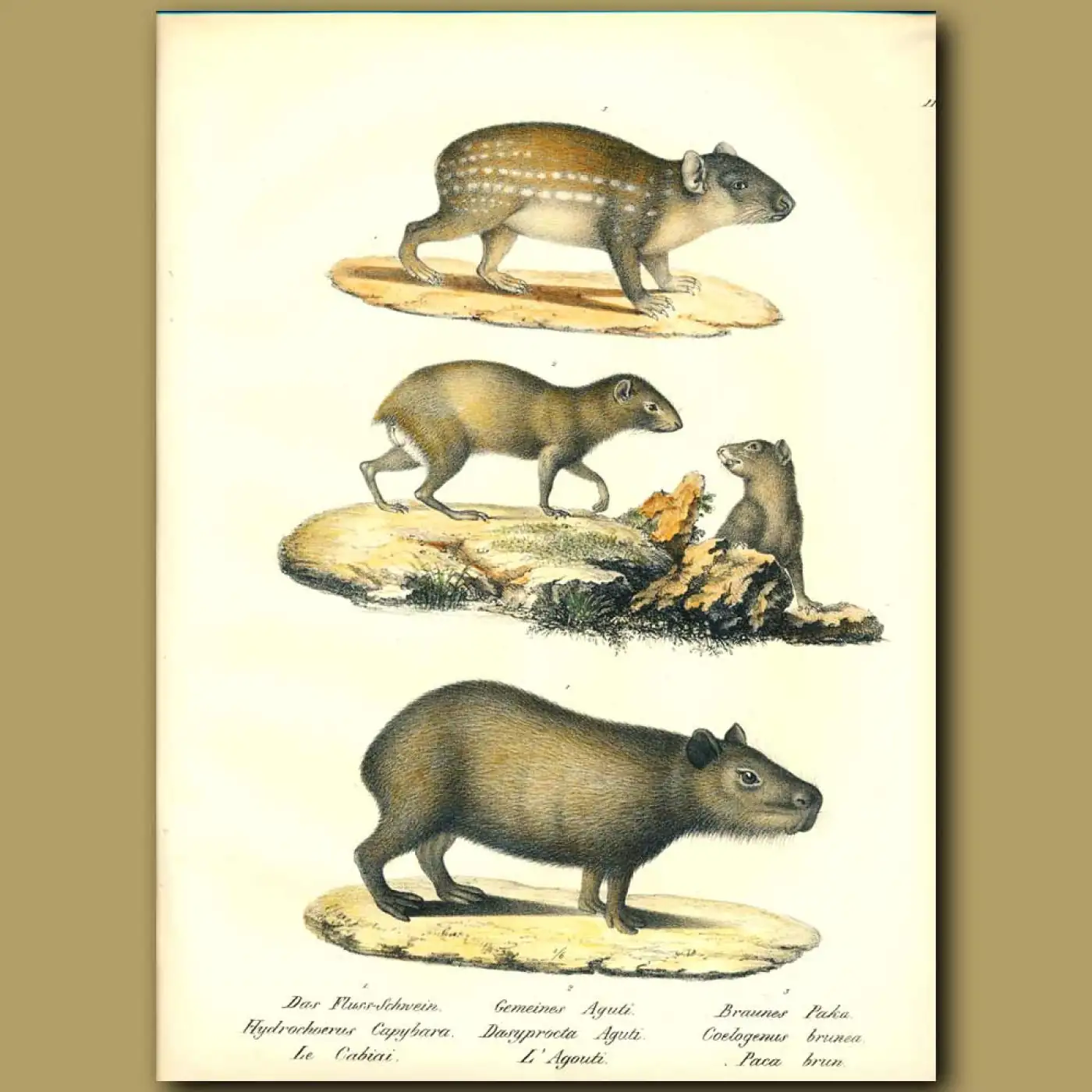
Agoutis are medium-sized rodents found throughout Central and South America. These nimble creatures are built for life in the dense forests, with slender bodies and short ears that help them navigate through thick underbrush.
Capybara: The Giant of the Rodent World
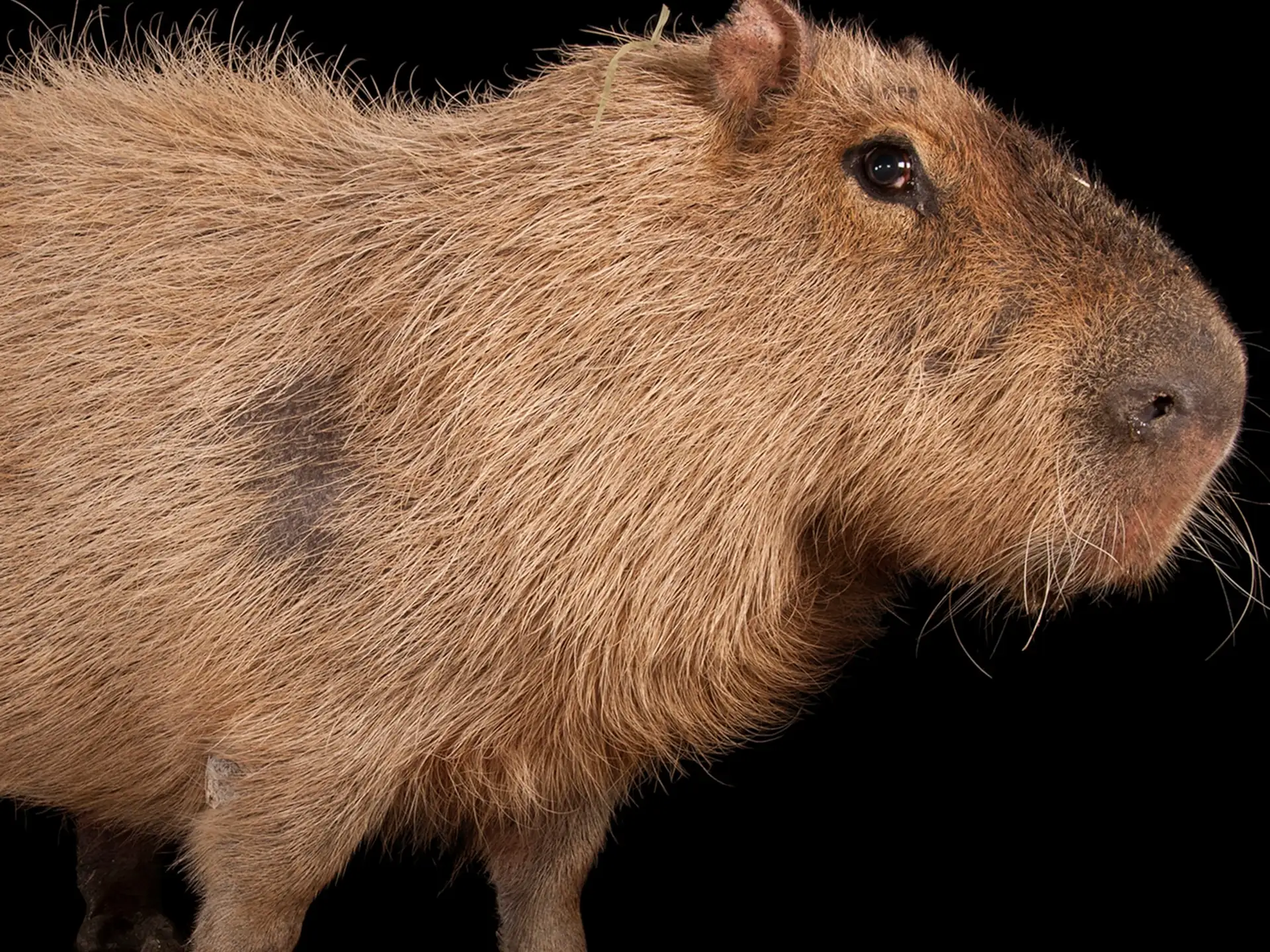
On the other hand, capybaras are the undisputed heavyweights of the rodent family. These semi-aquatic mammals are native to South America and are known for their impressive size and social nature.
Size Matters: David vs. Goliath
When it comes to size, there’s no competition:
- Agoutis typically weigh between 3 and 6 kg (6.6 to 13.2 lbs)
- Capybaras can tip the scales at a whopping 50 to 75 kg (110 to 165 lbs)
Imagine this: you could fit about 12 agoutis into one capybara! It’s like comparing a house cat to a small bear.
Habitat: Where the Wild Things Are
Agouti’s Forest Paradise
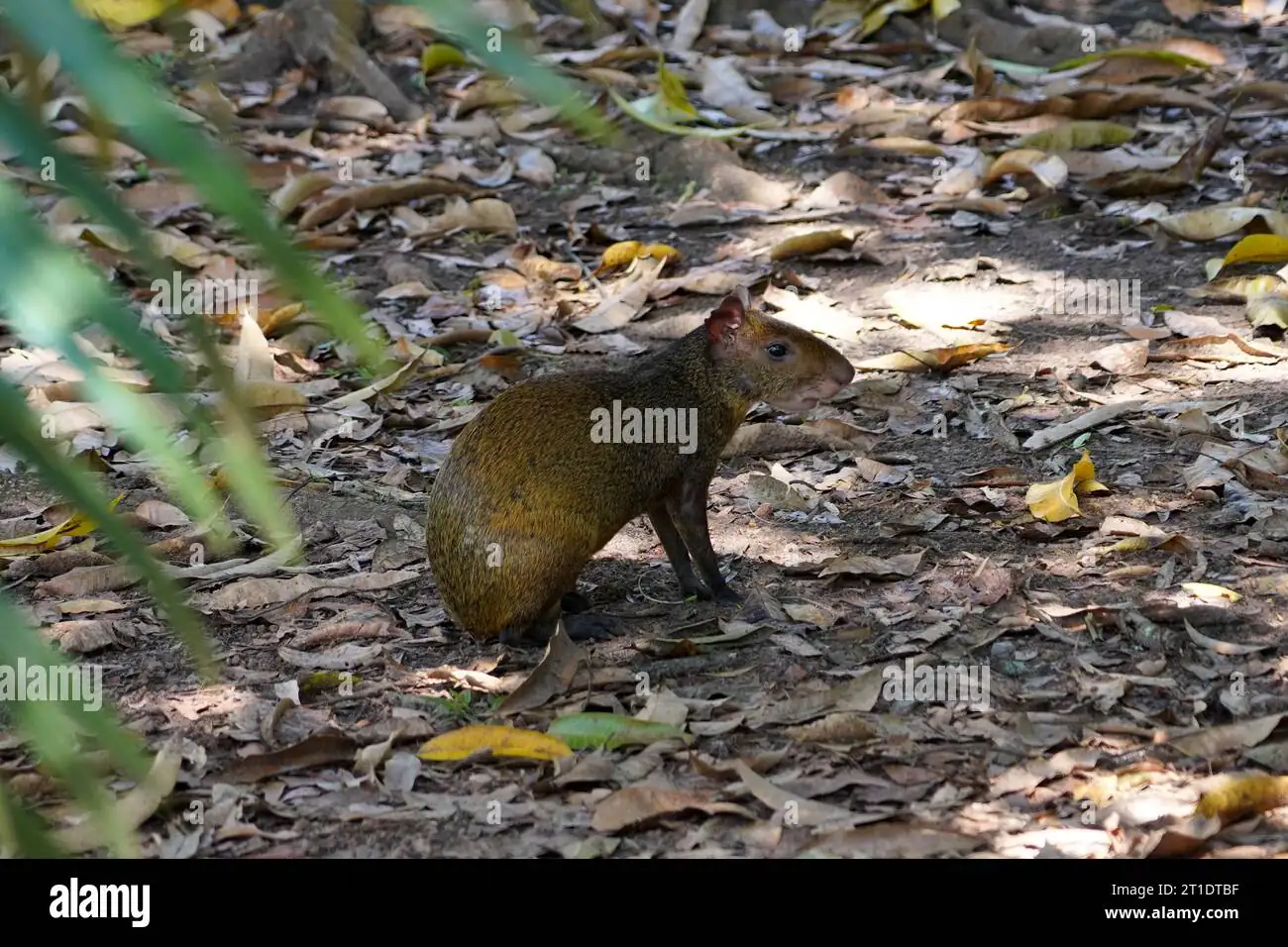
Agoutis are forest dwellers through and through. They thrive in:
- Dense tropical rainforests
- Secondary forests
- Plantations
These agile creatures are most comfortable when they’re close to cover, ready to dart into the undergrowth at the first sign of danger.
Capybara’s Waterfront Property
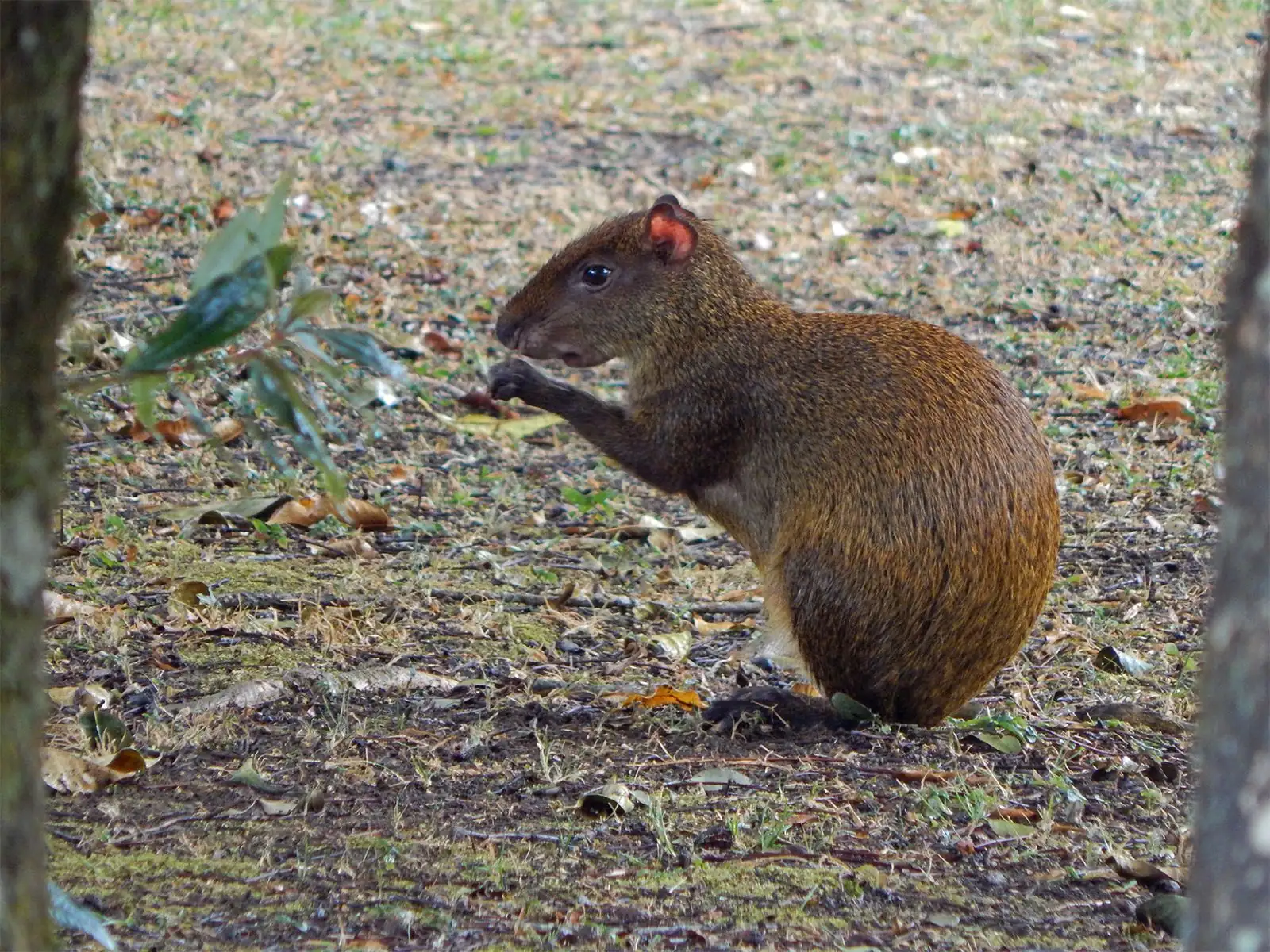
Capybaras, on the other hand, are all about that aquatic life. You’ll find them hanging out in:
- Marshes
- Swamps
- Rivers
- Lakes
They’re so well-adapted to water that they can hold their breath for up to five minutes! Talk about impressive.
Social Butterflies or Lone Wolves?
Agouti: The Introverted Rodent
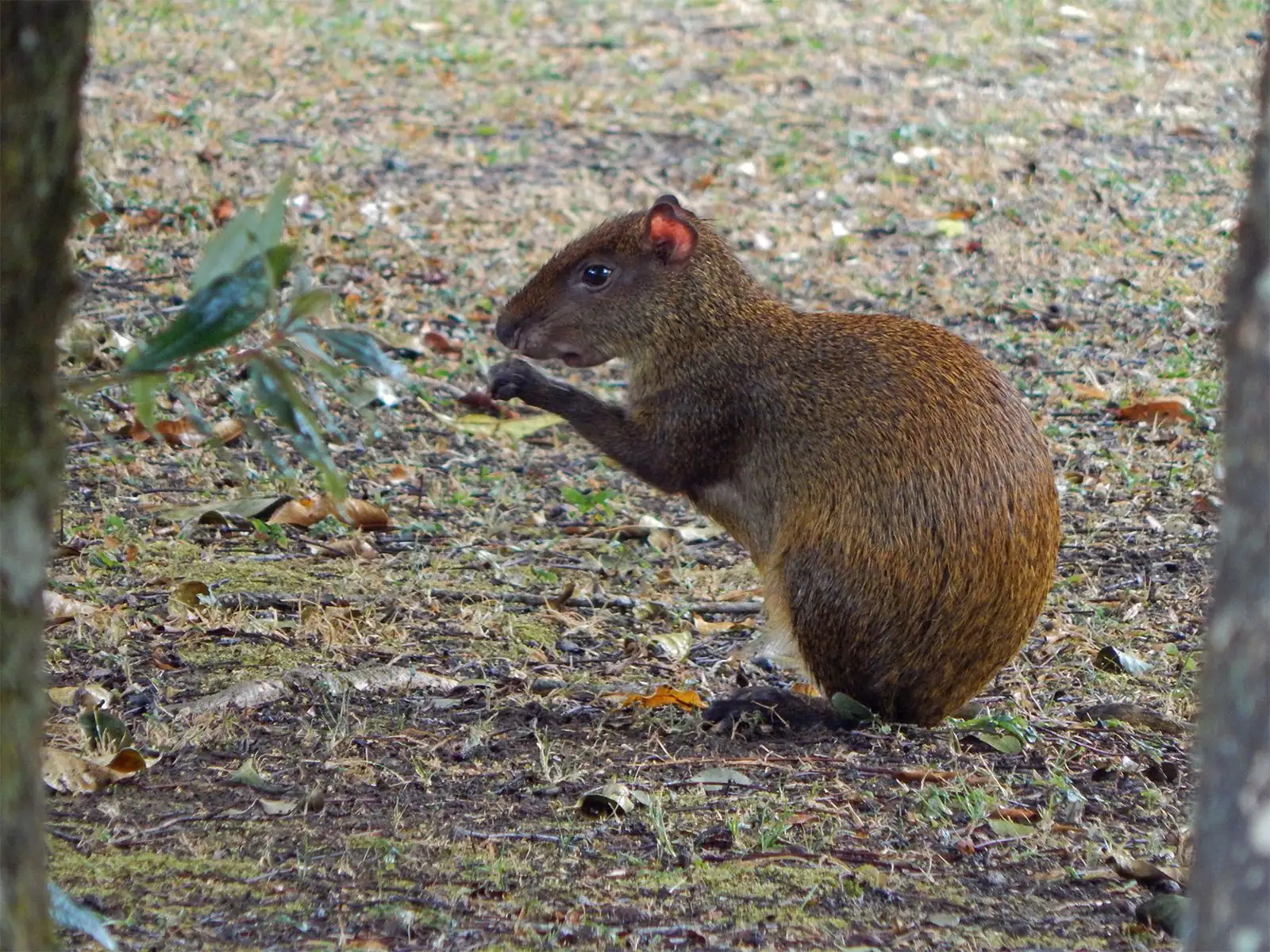
Agoutis are generally solitary creatures or found in pairs. They’re not big on social gatherings, preferring to keep to themselves or stick with their mate.
Capybara: The Party Animal
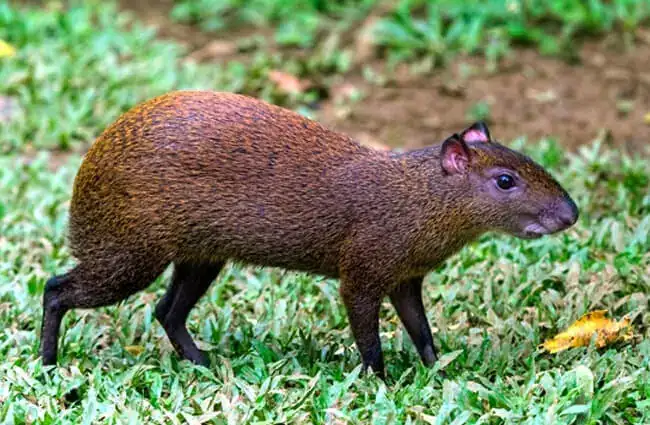
Capybaras are the complete opposite. These guys are the life of the party, often found in groups of 10 to 20 individuals. In some cases, you might even stumble upon a capybara gathering of up to 100 members! It’s like a rodent rave out there.
Dietary Habits: What’s on the Menu?
Agouti’s Gourmet Selections
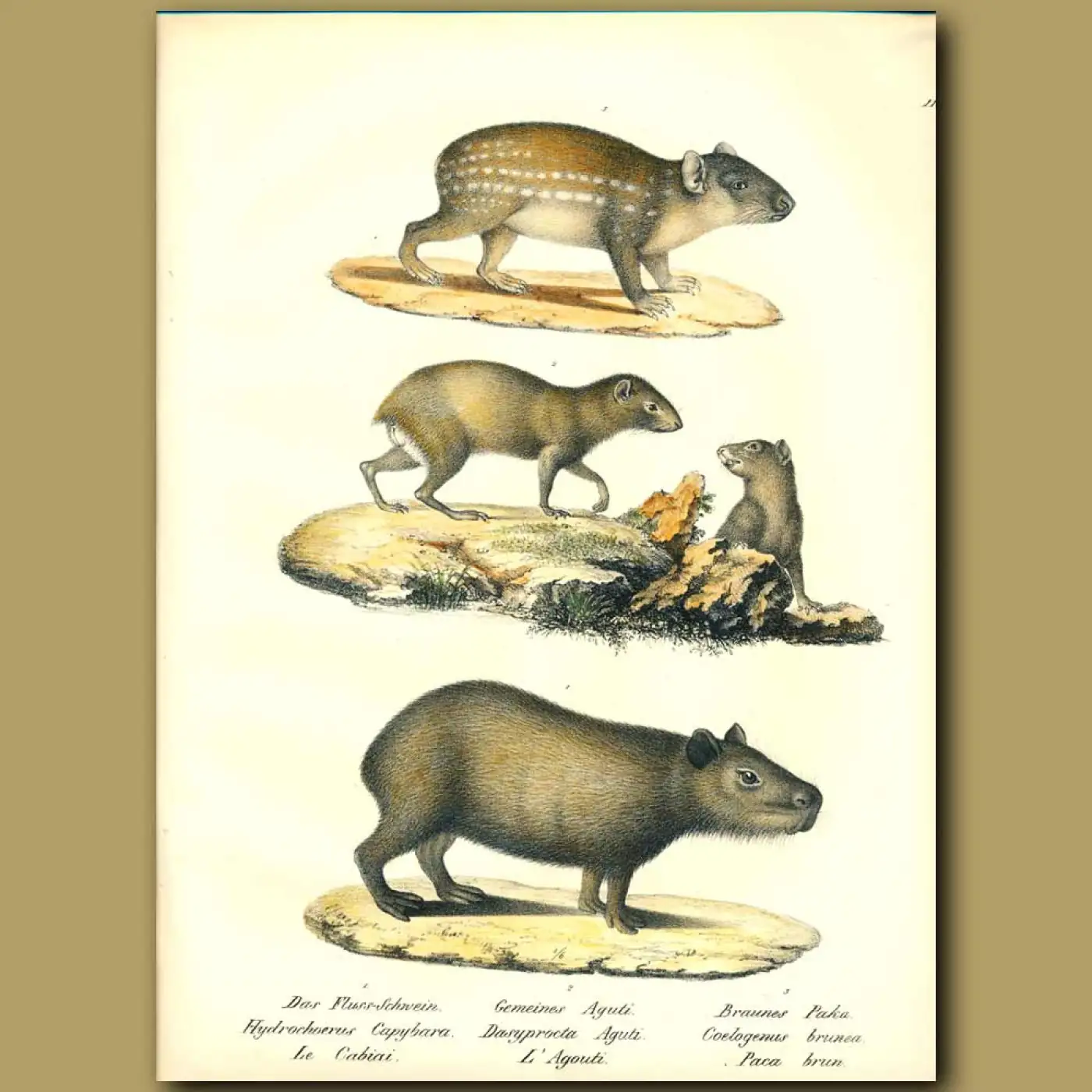
Agoutis are primarily herbivores with a taste for the finer things in life. Their diet includes:
- Fruits
- Seeds
- Nuts
- Fungi
Fun fact: Agoutis play a crucial role in seed dispersal, helping to maintain the health of their forest ecosystems.
Capybara’s All-You-Can-Eat Buffet
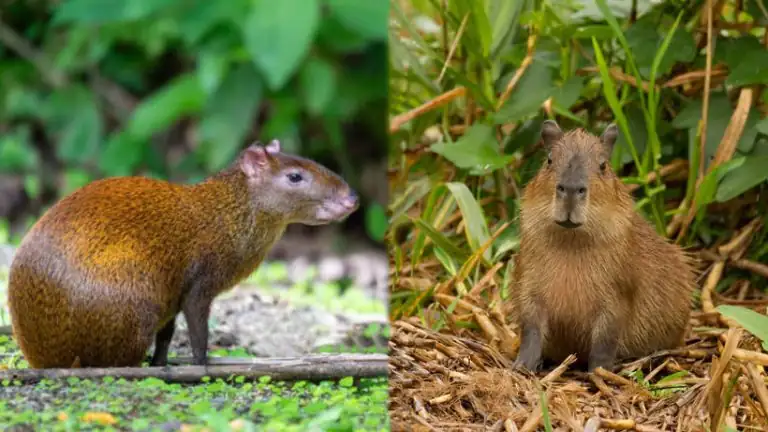
Capybaras are also herbivores, but they’re not as picky as their agouti cousins. Their menu consists of:
- Grasses
- Aquatic plants
- Bark
- Fruits
These big guys can chow down on up to 8 pounds of grass per day! That’s a lot of lawn mowing.
Predator Alert: Who’s on the Hunt?
Agouti’s Stealthy Escape
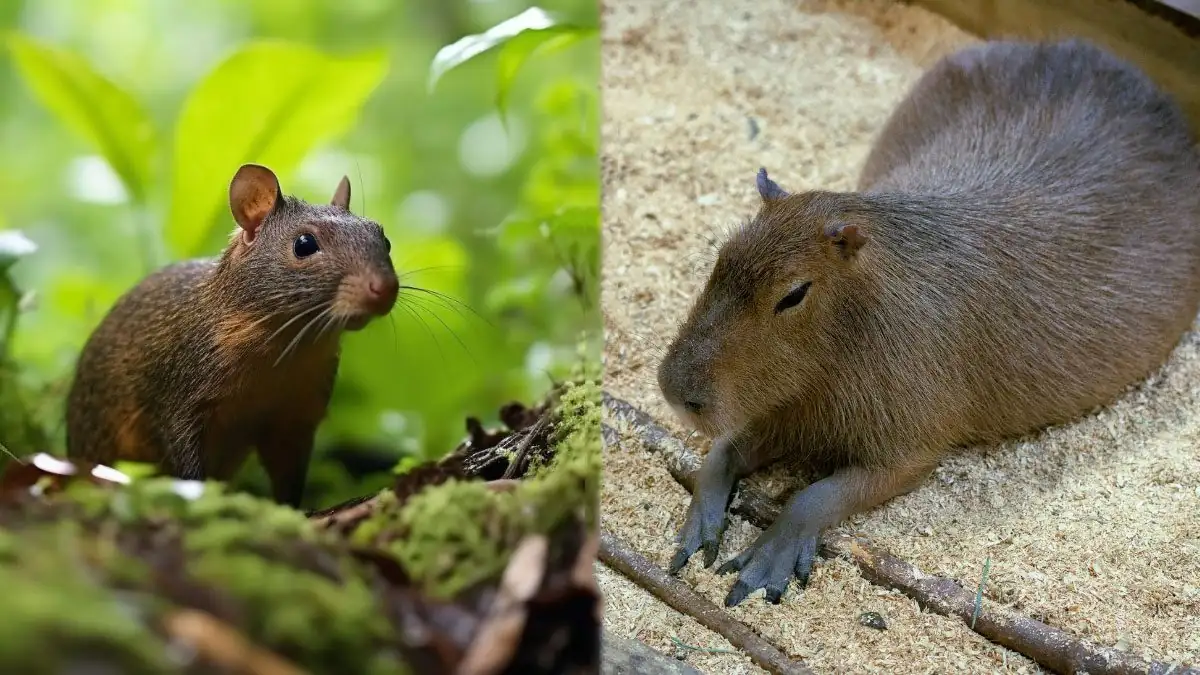
Agoutis have to watch out for a variety of predators, including:
- Jaguars
- Ocelots
- Large birds of prey
Their best defense? Lightning-fast reflexes and the ability to disappear into the dense forest undergrowth in the blink of an eye.
Capybara’s Safety in Numbers
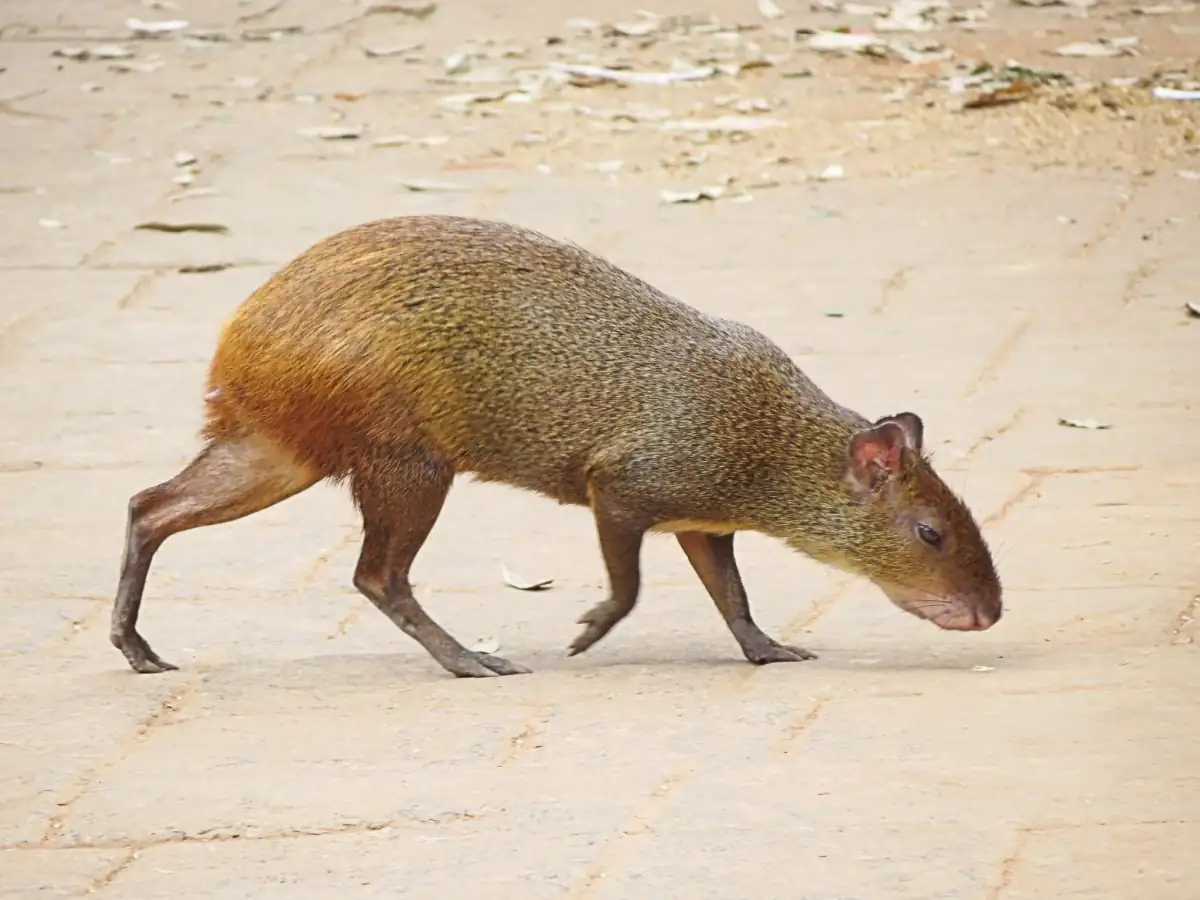
Capybaras face threats from:
- Jaguars
- Anacondas
- Caimans
But their social nature gives them an advantage. With so many eyes on the lookout, it’s harder for predators to sneak up on a capybara group.
Adaptations: Nature’s Clever Design
Agouti’s Forest-Ready Features
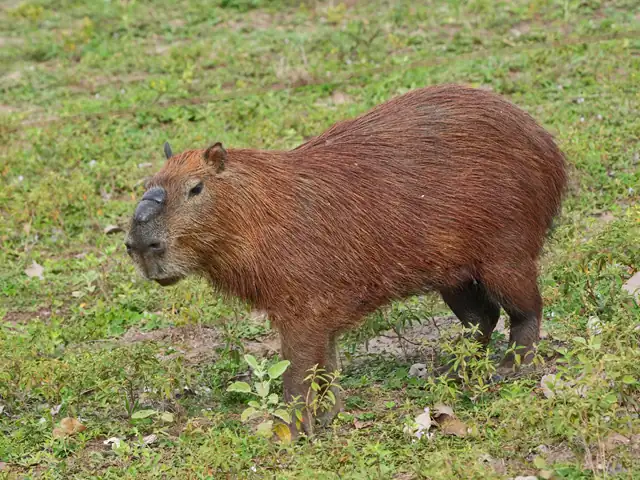
Agoutis are built for forest life:
- Sharp claws for digging and climbing
- Powerful hind legs for quick escapes
- Keen senses to detect danger
Capybara’s Aquatic Arsenal
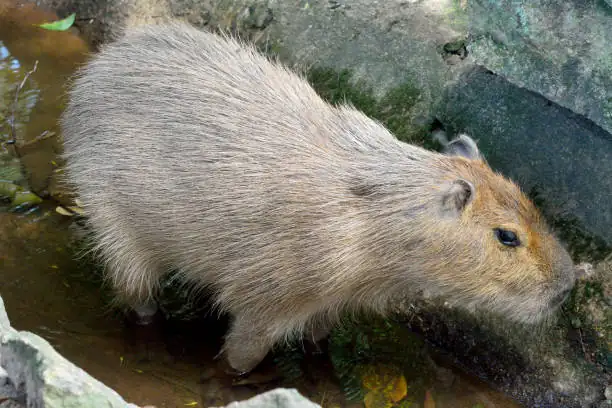
Capybaras are equipped for their semi-aquatic lifestyle:
- Webbed feet for efficient swimming
- Eyes, ears, and nostrils positioned high on their heads for surface swimming
- Dense, oily fur that dries quickly
Conservation Status: How Are They Faring?
Agouti: Holding Steady
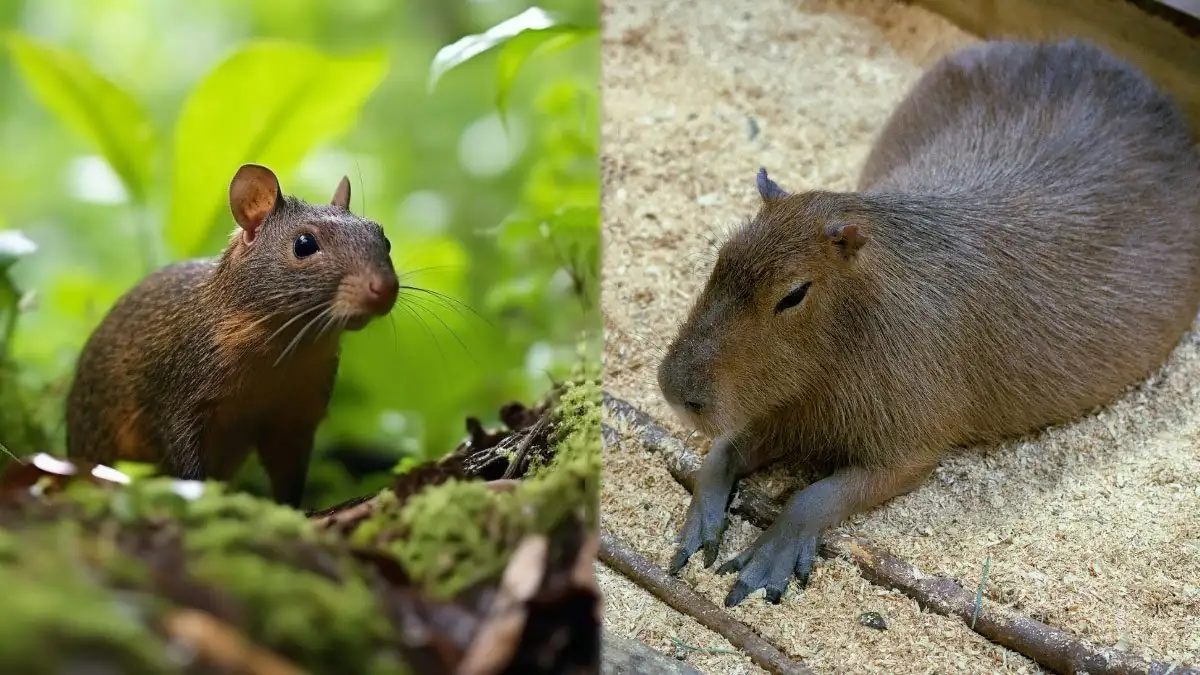
While not currently endangered, agoutis face threats from:
- Habitat loss
- Hunting
Conservation efforts are focused on protecting their forest habitats.
Capybara: Thriving Despite Challenges
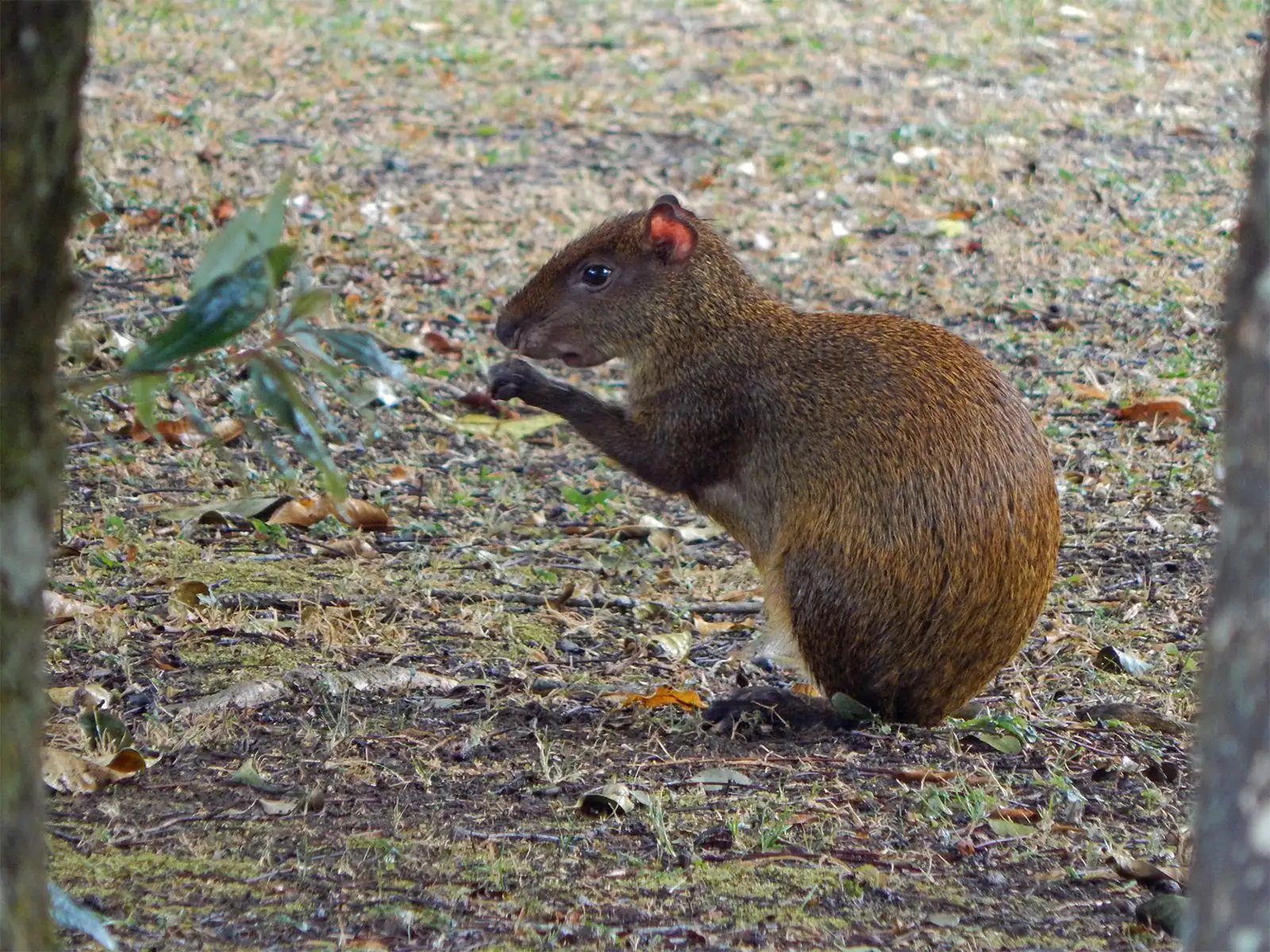
Capybaras are doing relatively well, but they face:
- Habitat destruction
- Hunting for their meat and hide
Their adaptability has helped them maintain stable populations in many areas.
FAQs: Your Burning Questions Answered
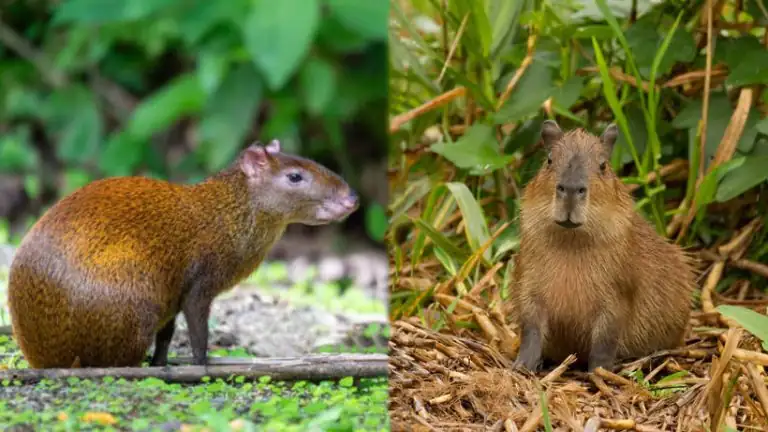
- Are agoutis and capybaras related?
Yes, they’re both rodents, but they belong to different families. Think of them as distant cousins. - Can agoutis swim like capybaras?
While agoutis can swim if necessary, they’re not nearly as adept in the water as capybaras. - Do people keep agoutis or capybaras as pets?
It’s not common, but some people do keep them as exotic pets. However, it’s important to note that this requires specialized care and may be illegal in some areas. - Which is more intelligent, the agouti or the capybara?
Both are intelligent in their own ways. Capybaras show more complex social behaviors, while agoutis display impressive problem-solving skills when it comes to foraging. - Can agoutis and capybaras interbreed?
No, they’re too distantly related to produce offspring together.
The Bottom Line: Celebrating Diversity
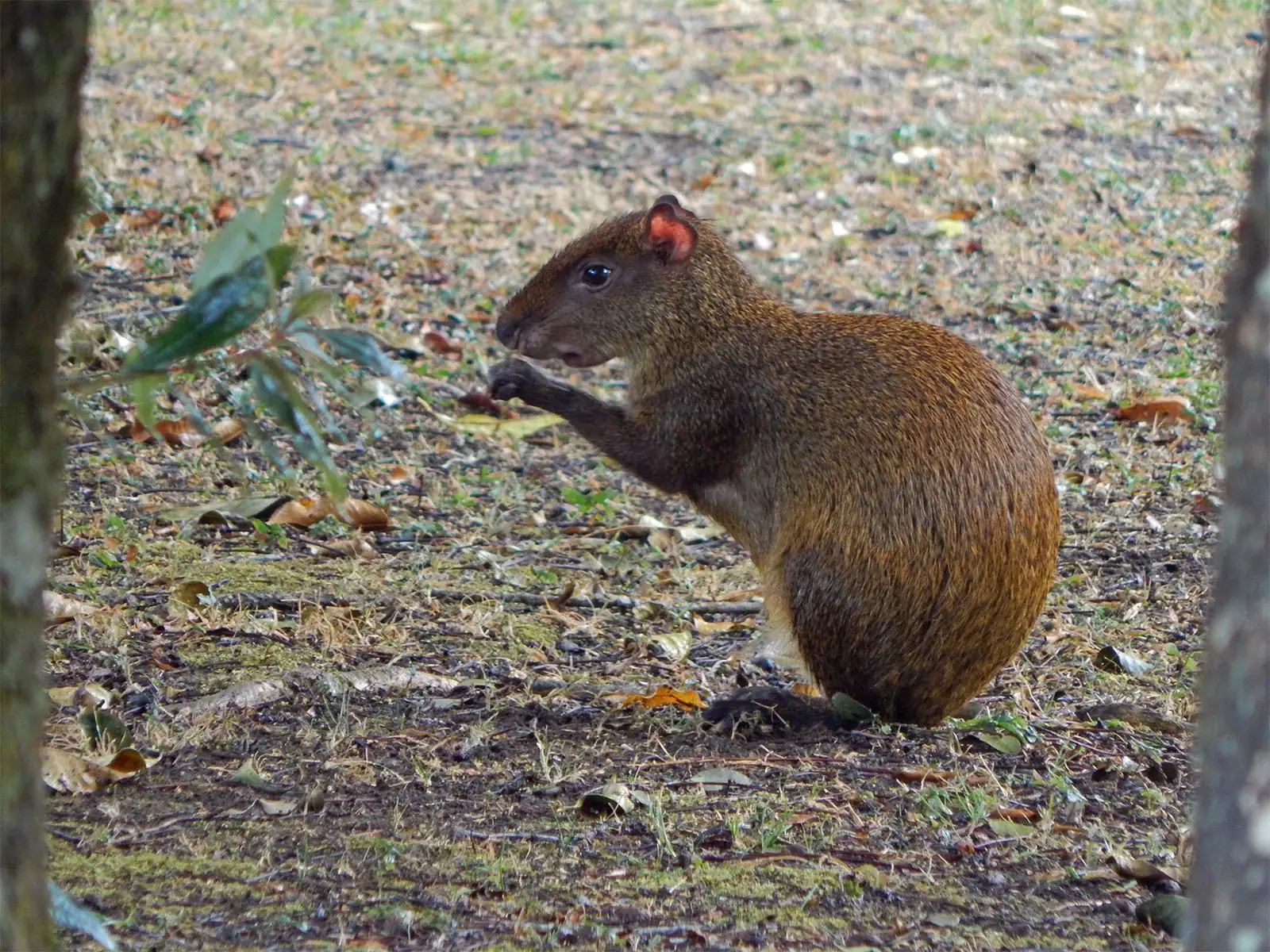
When it comes to agouti vs capybara, it’s not about which one is better. It’s about appreciating the incredible diversity of rodents in South America. From the nimble, forest-dwelling agouti to the social, semi-aquatic capybara, each species has its own unique adaptations and ecological role.
So next time you’re watching a nature documentary or visiting a zoo, take a moment to appreciate these fascinating creatures. They might just surprise you with how cool rodents can be!
Remember, whether you’re dealing with a tiny agouti or a massive capybara, every animal has its place in the grand tapestry of nature. And that’s something worth celebrating.
